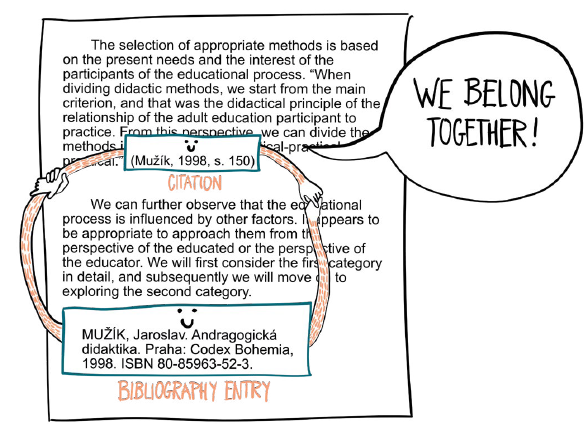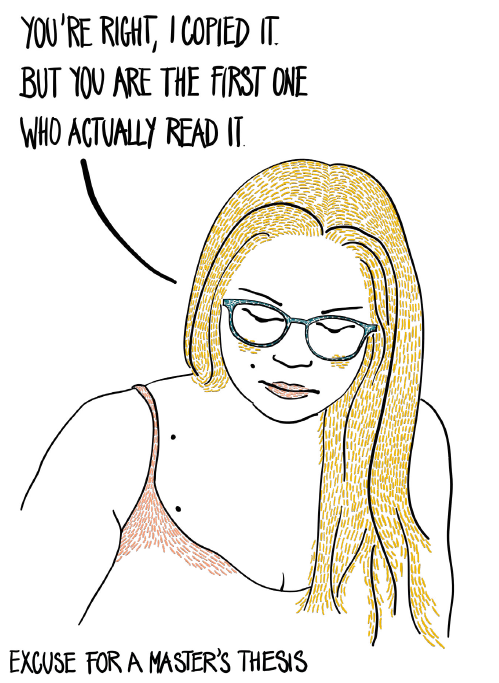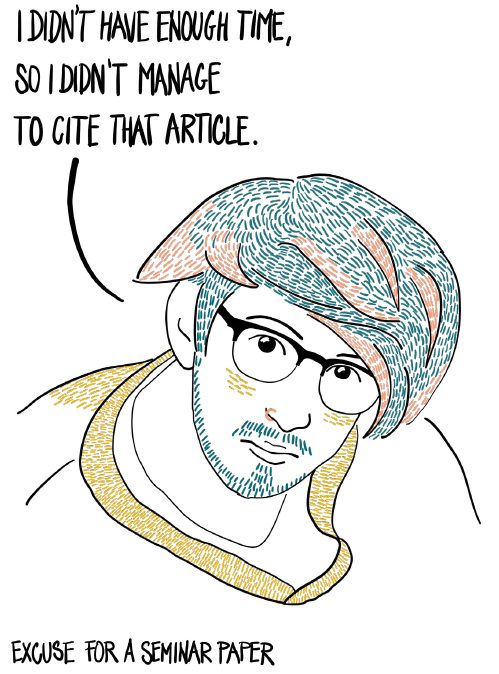How to cite
Can you remember the three tips against plagiarism? They are the basis for all citations.
Three tips against plagiarism
- Distinguish someone else’s ideas from your own
- Refer to the original source
- Reference the original source so that it can be traced back
There are many ways you can refer to the original source. We call these referencing styles. Referencing styles are sets of rules that tell us what information to include, in what order, how to format them and how to use punctuation. It’s important to select one referencing style and use it consistently throughout your work.
A source of information may be not only written text, but also oral communication such as an interview, a video, image, graph, table… We need to identify all of these using references.
Every profession and every school has its own rules for referen cing. You should definitely look these up before you start writing. Your supervisor might even tell you his or her preferred citation style. If not, it’s up to you. The most frequently used referencing style in the Czech Republic is ČSN ISO 690. If you’re unsure about which style to use, choose this one. You can also use referencing management software, which will generate your references automatically.
For referencing style ČSN ISO 690, check out www.citace.com/CSNISO- 690. That’s a really useful website.
Inseparable partners: citation and bibliography entry
References have two components: a citation and a bibliography entry. The citation is information in the text that refers to the bibl iography entry. We include the bibliography entry in the bibliography index, usually at the end of the work. It is clear, therefore, that each in-text citation has to have its partner in the bibliography, and vice versa.

According to ČSN ISO 690, we can use one of three ways of creating references:
- word in-text citations (so-called Harvard style, typically Surname, year of publication, page number)
- numerical in-text citations to a list of references at the end of a chapter or work
- numerical citations to footnotes
Bibliography entry of an online article in different citation styles:
ČSN ISO 690
DHAR, Sandipan, Ramkumar RAMMOORTHY, Samujjala DEB a Deepak PARIKH. Nanotechnology in pediatric dermatology. Indian Journal of Paediatric Dermatology [online]. 2019, 20(4), 290-294 [cit. 2020-05-06]. DOI: 10.4103/ijpd.IJPD_95_17. ISSN 23197250
APA
Dhar, S., Rammoorthy, R., Deb, S., & Parikh, D. (2019). Nanotechnology in pediatric dermatology. Indian Journal of Paediatric Dermatology, 20(4), 290-294. https://doi.org/10.4103/ijpd.IJPD_95_17
MLA (7th edition)
Dhar, Sandipan et al. “Nanotechnology in pediatric dermatology”. Indian Journal of Paediatric Dermatology 20.4 (2019): 290-294. 06 May 2020.

Direct quotation vs. paraphrasing
The text we are using may be either a verbatim quotation that is directly copied, or a paraphrase that is rewritten in our own words. A citation as well as a bibliography entry must, of course, be included both with a direct quotation and paraphrased text, so it is clear which ideas are our own and which are someone else’s.
Direct quotation
- the text is copied word for word
- the quoted text is enclosed in quotation marks; alternatively, we can use italics or indentation
Indirect quotation, i.e. paraphrasing
- the text is rewritten in our own words, but we don’t change the meaning of the original idea
- it is not enclosed in quotation marks
To avoid including too many quotation marks in the text, we shouldn’t use too many direct quotations. Paraphrasing is welcome. We should be careful, however, not to change the meaning of the original idea. We should pay attention to ensure that it’s clear which parts of the text are paraphrased and which are our own.
Examples of in-text citations in Harvard style ČSN ISO 690:
Direct quotation enclosed in quotation marks
The selection of appropriate methods is based on the present ne eds and the interest of the participants of the educational process. “When dividing didactic methods, we start from the main criterion, and that was the didactical principle of the relationship of the adult education participant to practice. From this perspective, we can divide the methods into theoretical, theoretical-practical, and practical.” (Mužík, 1998, p. 150)
Paraphrasing one sentence with included citation
Teaching methods can be divided with respect to different aspects. In relation to an adult education participant’s relationship to practice, we can divide the methods into theoretical, theoretical-practical, and practical (Mužík, 2010).
Paraphrasing an entire paragraph
We can characterize a workshop as a didactical method which foll ows from a different educational activity, e.g. a lecture. The participants engage in a specific chosen topic, and the result or output will continue to operate after end of said workshop. (Mužík, 2010)
Pay attention to the full stop!
The reference in parentheses is located before the punctuation mark when paraphrasing a sentence. When paraphrasing an entire paragraph, the reference is located after the punctuation mark.
Paraphrasing with an in-text mention of the author
Mužík (2010) characterizes a workshop as a didactical method which follows from a different educational activity, such as a lecture, during which the participants in a closed session engage in a specific chosen topic, and the result or output of which will continue to operate after the end of such session. I agree with such characterisation of a workshop.
